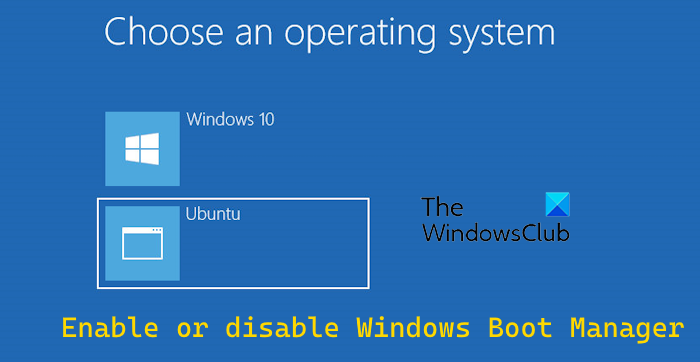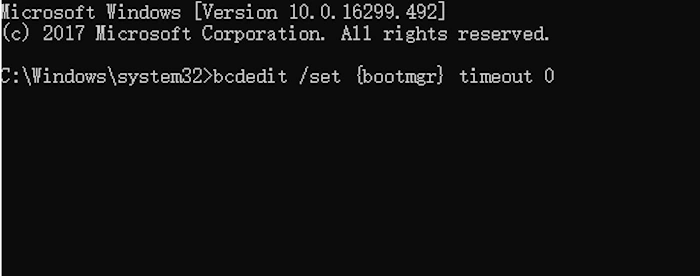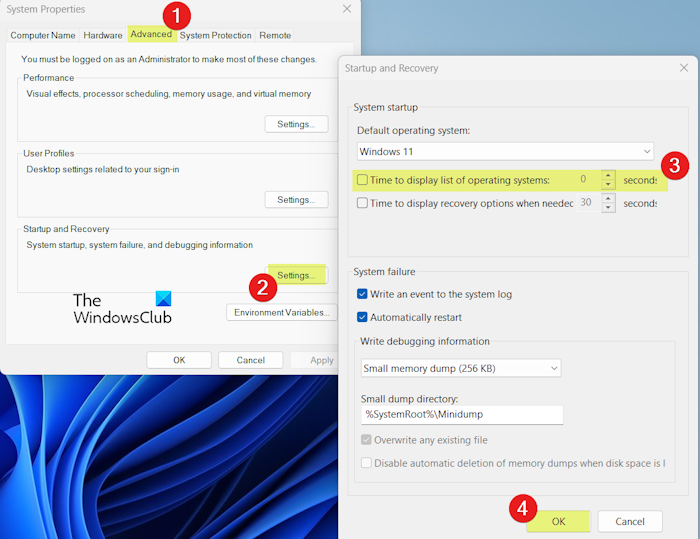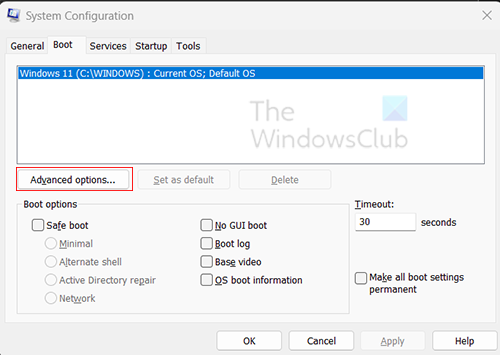In this post, we will show you multiple methods to enable or disable Windows Boot Manager on Windows 11/10.
Windows Boot Manager (BOOTMGR) is one of the main components of the Windows OS that configures the boot environment. It is responsible for managing the boot sequence, initiating the startup of the operating system, and dealing with boot-related errors. It is especially useful when there are multiple operating systems installed on your PC. When you start or restart your PC, you can choose which OS you want to load.

Now, if you want to disable Windows Boot Manager to reduce the overall time spent booting a system, you can do that. Although it is not recommended to do so, it significantly speeds up the boot process. Besides that, Windows also lets you edit the time duration for how long that BOOTMGR will be displayed.
Enable or disable Windows Boot Manager on Windows 11/10
Here are the methods using which you can enable or disable the Windows Boot Manager on Windows 11/10:
- Enable or disable Windows Boot Manager using Command Prompt.
- Use System Properties to enable or disable Windows Boot Manager.
- Enable or disable Windows Boot Manager via the System Configuration tool.
1] Enable or disable Windows Boot Manager using Command Prompt

You can enable or disable Windows Boot Manager using the command line interface. Open the Command Prompt and enter the required command to modify Windows Boot Manager. Here are the steps to do so:
First, run the Command Prompt as an administrator; open Windows Search using Win+S, enter cmd in the search box, hover the mouse over the Command Prompt app from the search results, and select the Run as administrator option.
Now, enter the following commands one by one:
bcdedit / set {bootmgr} displaybootmenu yes
bcdedit /set {bootmgr} timeout 30
Note: In the above command, the timeout value determines the duration (in seconds) for which the boot manager is displayed.
In case you want to disable the Boot Manager completely, you can type the below command and press the Enter button:
bcdedit / set {bootmgr} timeout 0
To re-enable the Boot Manager, simply increase the timeout value in the above command.
2] Use System Properties to enable or disable Windows Boot Manager

Another method to edit Windows Boot Manager is via System Properties. You can use this utility to enable or disable BOOTMGR. Here are the steps to do that:
First, open the Run command box using Win+R and enter sysdm.cpl in its Open field to quickly launch the System Properties window.
Now, go to the Advanced tab, and under the Startup and Recovery section, click on the Settings button.
After that, uncheck the Time to display list of operating systems checkbox to disable the Boot Manager and click on the OK button. You won’t see the Windows Boot Manager screen when rebooting your PC now.
If you want to modify the time to display Windows Boot Manager, you can tick the Time to display list of operating systems box and then enter the desired time in seconds.
Once done, press OK, then click on the Apply > OK button to save changes, and close the System Properties window.
3] Enable or disable Windows Boot Manager via the System Configuration tool

Another method to enable, disable, or modify the BOOTMGR is to use the System Configuration tool. Let us check out how.
First, evoke the Run dialog and enter msconfig in the Open box to launch System Configuration.
Next, go to the Boot tab.
Now, enter the desired Timeout value in seconds to modify the duration of Windows Boot Manager when booting up the system.
If you want to disable Windows Boot Manager, enter 0 in the Timeout box. Otherwise, you can enter values like 30, 40, etc.
When done, click the Apply > OK button to apply modifications and close the window.
Read: Fix Windows Boot Manager is on the wrong drive.
What happens if Windows Boot Manager is disabled?
When you disable Windows Boot Manager, the current or default OS boots up automatically. This reduces the total time Windows takes to start. If you don’t want to disable Boot Manager, you can even reduce the timeout duration to increase the speed of the boot process.
Read: How to boot into legacy Boot Manager in Windows 11
Should I enable Windows Boot Manager?
Yes, you must have Windows Boot Manager enabled if you have multiple operating systems installed on your PC. It lets you select the OS you want to use on your system startup.
Now read: Fix BOOTMGR is Missing error in Windows.